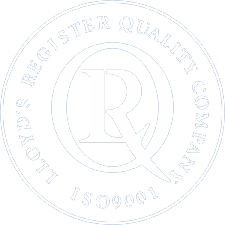
SinoScan blog
Sourcing from China and quality assurance

SinoScan blog
Sourcing from China and quality assurance
Table of Contents
BACKGROUND
During the past 40 years China has become the world’s primary manufacturing centre, offering mature and well-developed capabilities in a wide range of technologies and leading the world in some areas.
With ongoing very high levels of investment in research and development, many technologies are advancing faster in China than elsewhere.
Traditionally one of primary benefits of sourcing from China is lower product manufacturing costs. Notwithstanding increasing labour costs in recent years, Chinese suppliers still offer competitive prices compared to that available from western factories.
With increasing technical capability and technical skills in China, higher level added-value product design and development services are now readily available, as well as manufacturing capabilities. Consequently, sourcing from China offers great opportunities for business development, but it is not without challenges.
SOURCING STRATEGY
Drivers for sourcing from China are varied and dependent on many factors including, but not limited to price, quality, technical complexity, target market location, logistics, and resource availability. The primary objective will be to find dependable manufacturing partners that can consistently produce products on time, within budget, and to the required quality. Preparation for embarking upon a sourcing initiative requires planning and should consider:
- Purchase price targets
- Demand forecast and batch sizes
- Product technical requirements
- Intellectual property
- Security of supply
- Inventory management
- Currency exchange rate variation
- Product destination and distribution
Opportunities include:
- Creation of a platform for selling to markets in China;
- Access to competitively priced products;
- Taking advantage of China’s burgeoning technological developments;
- Direct shipment to international markets;
- Full development for new products.
Challenges include:
- Cultural and business practice differences;
- Communication misinterpretations;
- Selection of suitable suppliers;
- Intellectual property security.
SOURCING METHODS
SELF-MANAGED
SOURCING AGENTS
FULLY MANAGED SERVICES
RELATIONSHIPS AND CULTURAL CONSIDERATIONS
There are many aspects of conducting business in China that may be unfamiliar to western companies. Although modern business practices have been adopted in China, particularly with younger generations, centuries-old traditions remain and the business culture of China today is a mixture of old and new.
The ancient philosophy of Confucianism is very much alive and promotes loyalty, a sense of duty, respect for age and seniority, as well as sincerity. The concept of “guanxi” provides the underlying structure for social networks and is still a major influence in establishing trust and mutual obligations. Often companies still retain hierarchical management structures in which the owner is the primary decision maker. Also, distinctly different approaches to business may be adopted by younger and older managers.
Building trusted relationships is crucial to doing business in China, so local partners and organisations that have established supplier bases can be crucial in achieving successful sourcing. Face-to-face meetings are fundamentally important in establishing a solid start and growing business relationships.
Close cooperation with suppliers is essential with a need to:
- Avoid absolute adherence to western business practices;
- Adopt a solutions driven approach;
- Ensure good communication practices;
- Actively engage with suppliers to build relationships;
- Treat suppliers as partners in the venture.
MANUFACTURER SUITABILITY AND CAPABILITY
There are thousands of potential suppliers in China and so the investigation to find the most appropriate one can be difficult and onerous, particularly if being attempted directly from the West. The due diligence process should include a review of the supplier’s suitability by conducting a supplier audit covering as a minimum: business management; commercial history; technical capability; quality assurance facility; health and safety; employee welfare; environmental policy. Specialist quality management companies can be employed to perform this task, but if you have a primary business partner, or are using a managed sourcing company, they will have a closer understanding of your product and/or service requirements when performing the audit.
Some tier 1 suppliers in China have similar exceptional capabilities and track records that match, or exceed, the best in the world. Similarly, there are many tier 2 and 3 suppliers that have invested heavily in advanced manufacturing technologies and business and quality management processes. Larger higher tier factories may have particular specialisations and/or require specific demands in terms of minimum order quantities and other commercial constraints. Under these circumstances, it is worth considering suppliers that may not be in the top echelon of their industrial sector but have the capability and experience to meet your supply requirements and at a more competitive price.
Annual demand quantities and batch sizes are determining factors to the attractiveness of your business to suppliers. Hence, your forecasts need to be realistic and not inflated. If your quantities are relatively low it may be difficult to engage suppliers, but it may possible to take advantage of the purchasing power of sourcing companies, if you are working with one, to enable your product to be accommodated.
PRODUCT REQUIREMENTS
Your product requirements need to be specified accurately, and with sufficient detail to allow the product to be made. This will typically include: technical descriptions; drawings; material grades; dimensional tolerances; formal qualification tests; finish and packaging requirements. It is also important to ensure that dimensional tolerance and other product performance requirements are practicable and achievable, without being unnecessarily over specified.
Although English is becoming more commonly used it is preferable for documentation to be translated into Chinese.
When evaluating the potential for supply, it is worthwhile considering the relative benefits of just sourcing components or the manufacture and test of sub-assemblies, or complete products, including, where appropriate, packaging to a retail ready condition.
An important factor when embarking on a remanufacturing exercise based on existing designs, or for new products, is to take the opportunity to perform a design-for-manufacture exercise in cooperation with the suppliers. This will yield benefits in terms of manufacturing efficiency, product quality, and cost. This may be difficult to complete effectively working directly with the supplier from the West, but can be completed effectively when working with a primary partner, or managed sourcing company.
When obtaining quotations, where possible, it is advisable to provide target prices and obtain proposals from multiple suppliers to enable commercial and technical offer comparisons to be
made.
PRODUCT DEVELOPMENT
With increasing design capability and creativity in China it is now practicable to conduct a complete product development from initial design through to prototype and volume manufacture.
During product development it is often useful to make rapid prototype parts, for which China now has extensive capabilities. For volume production, tooling is sometimes required to enable parts to be made, for example for plastic injection mouldings. Tooling costs in China are low but are of high quality.
To avoid misunderstandings and subsequent delays in product development it is critical to ensure that the processes related to the manufacture of the product are appropriate, and capable of meeting the agreed technical requirements. These can be difficult to describe in some instances, particularly where quantitative measures are not available; for example, for aesthetic finishes where there is a subjective/qualitative element to the acceptability of the item.
PRODUCT MANUFACTURE
PRODUCT QUALITY
It is reasonable for you to expect high standards of product quality are consistently delivered. Over time there have been negative comments about quality issues with goods manufactured in China, which to an extent have been justified. However, when embarking upon sourcing programmes it is important to recognise that you have a crucial role in adequately describing, explaining, and agreeing the quality requirements with the supplier.
STANDARDS
China’s Guo Biao (GB) national standards system is similar in scope to British and other national standards. This includes standards that provide the basis for the testing that some products must undergo for the China Compulsory Certificate (CCC) certification for goods sold in China, which is similar to CE marking in Europe.
Generally GB standards are closely aligned with ISO and other international standards. However, there are some differences, which may need to be taken into account, for example when selecting materials specific material grades may be readily available in the West that are not readily available in China. Hence, it is important to be prepared to accept alternative compositions that are close equivalents.
COMMERCIAL AND CONTRACTUAL CONSIDERATIONS
A formal agreement with the supplier must be put in place and include as a minimum, with terms covering: scope of supply; technical requirements and applicable standards; quality requirements; and product acceptance criteria, including certificates of conformity and material certification; claim handling for non-conforming product; price variation; tooling manufacture, ownership, storage, maintenance, and replacement; packing and packaging requirements; compensation for late delivery; product change and configuration control procedures; minimum/maximum stock levels of finished goods; confidentiality clauses.
With the selection of a good supplier, the aim would be to maintain continuity of supply and grow the relationship. However, it is sensible to prepare for the possibility that the supplier could encounter problems or your relationship with the supplier could experience difficulties. In this instance, you need to understand the indications that things are not as they should be, for example, a lack of effective communication, a decline in product quality, unreasonable demands for price increases, and/or extended lead times.
In the event that you need to find alternative sources of supply then due consideration needs to be given to the transfer of any tools from the supplier. Hence, it is important to ensure that a clause related to this is included in the supplier agreement.
PAYMENT AND PRICES
INTELLECTUAL PROPERTY
Historically, China has had a reputation for compromising intellectual property (IP) rights and inappropriately using existing patents. However, IP rights have been acknowledged and protected in China since the 1980s, and laws have been established by government legislation in the areas of design, trademarks, copyright and patents. IP rights enforcement is improving but progress is still required and currently the laws in place exceed their actual enforcement
Hence, notwithstanding these improvements it is vitally important to make appropriate precautions to ensure your IP rights are secure. For example, even if your product is not patentable, it is strongly recommended that designs and trademarks are registered in China.
One way of providing extra protection is to arrange for component parts for your product to be made at separate, and unrelated, suppliers and then assembled and tested at a trusted company facility that may be your business partner or fully-managed supply company.
LOGISTICS AND DISTRIBUTION
China has a well-developed and increasingly effective transportation infrastructure. However, if suppliers are based in locations that are a long way from the main ports additional time will be required to transport goods.
You need to accommodate the lead times for shipment by sea to your designated destination. Hence, alternative inventory management strategies may need to be considered to enable manufacture and delivery times to match product demand.
Having complete products manufactured in China allows for their distribution to worldwide market destinations.
IN SUMMARY
The supply chain infrastructure and manufacturers in China offers a flexible, robust, and technically capable source of components and complete products for a diverse range of commercial, industrial, and technological business sectors. Providing good practices are followed, successful sourcing is readily achievable by using suppliers in China.
The primary keys to success are:
- Understanding business culture differences;
- Complete and accurate product specifications;
- Realistic projected order quantities;
- Reasonable product quality expectations;
- Meetings with, and audit of, suppliers.


